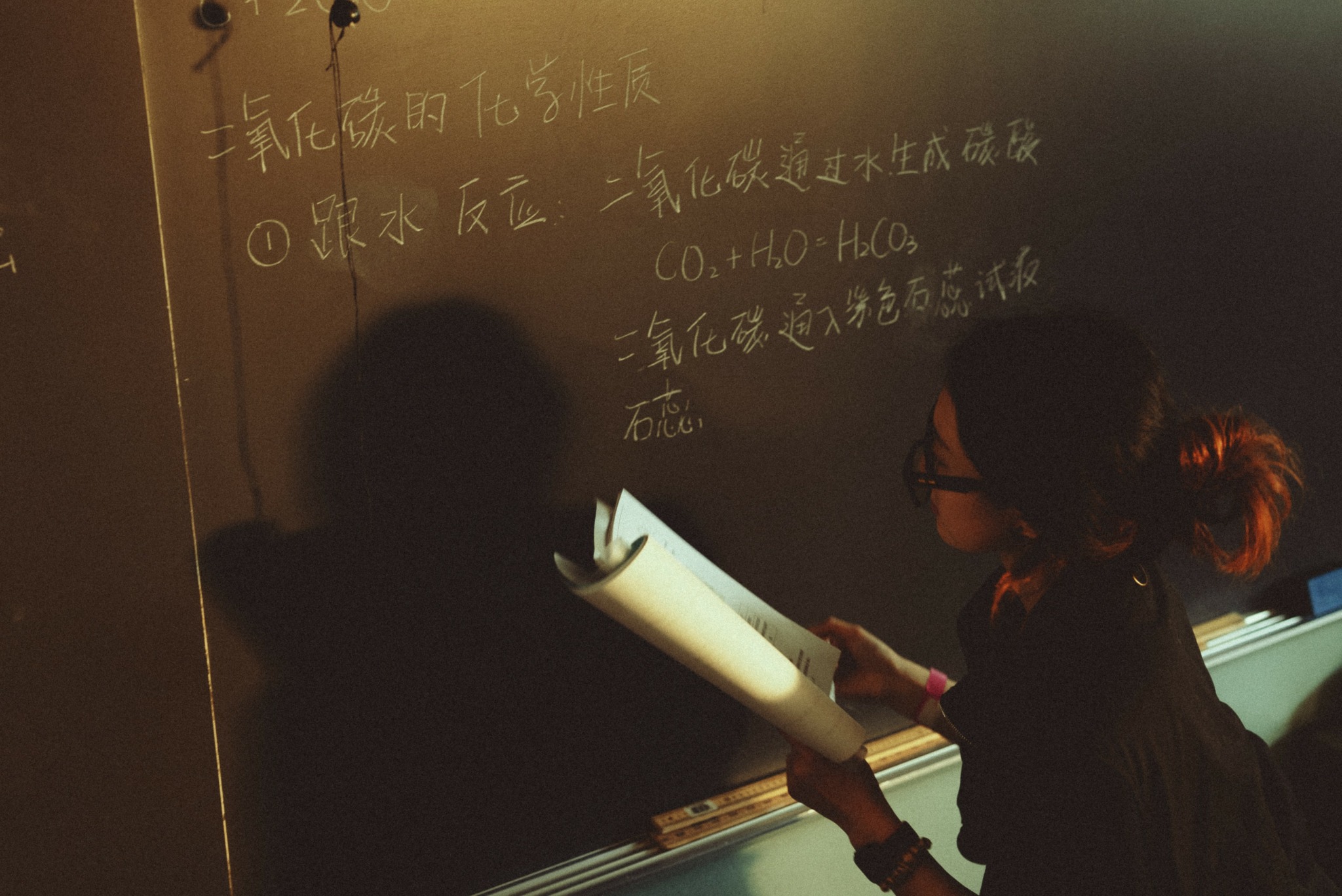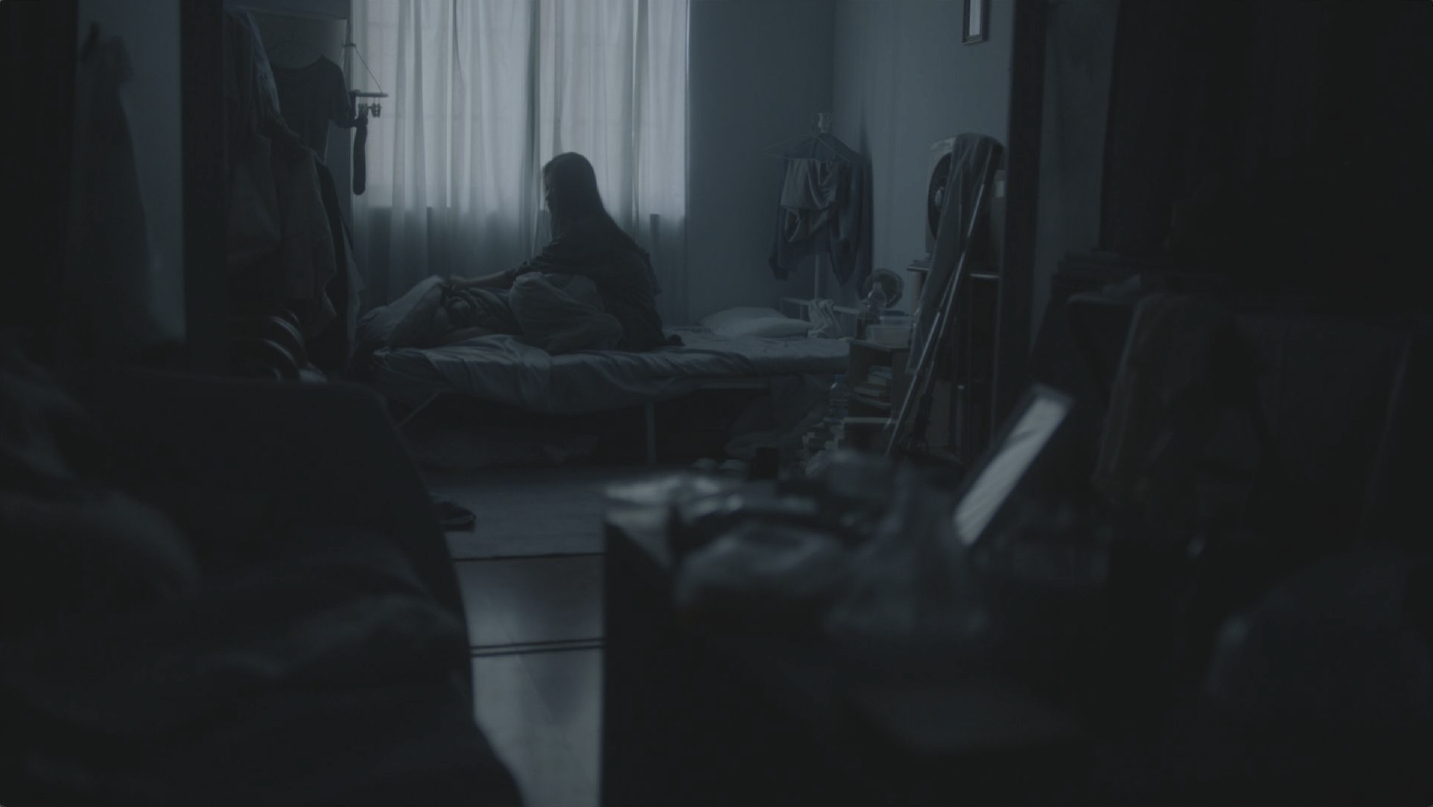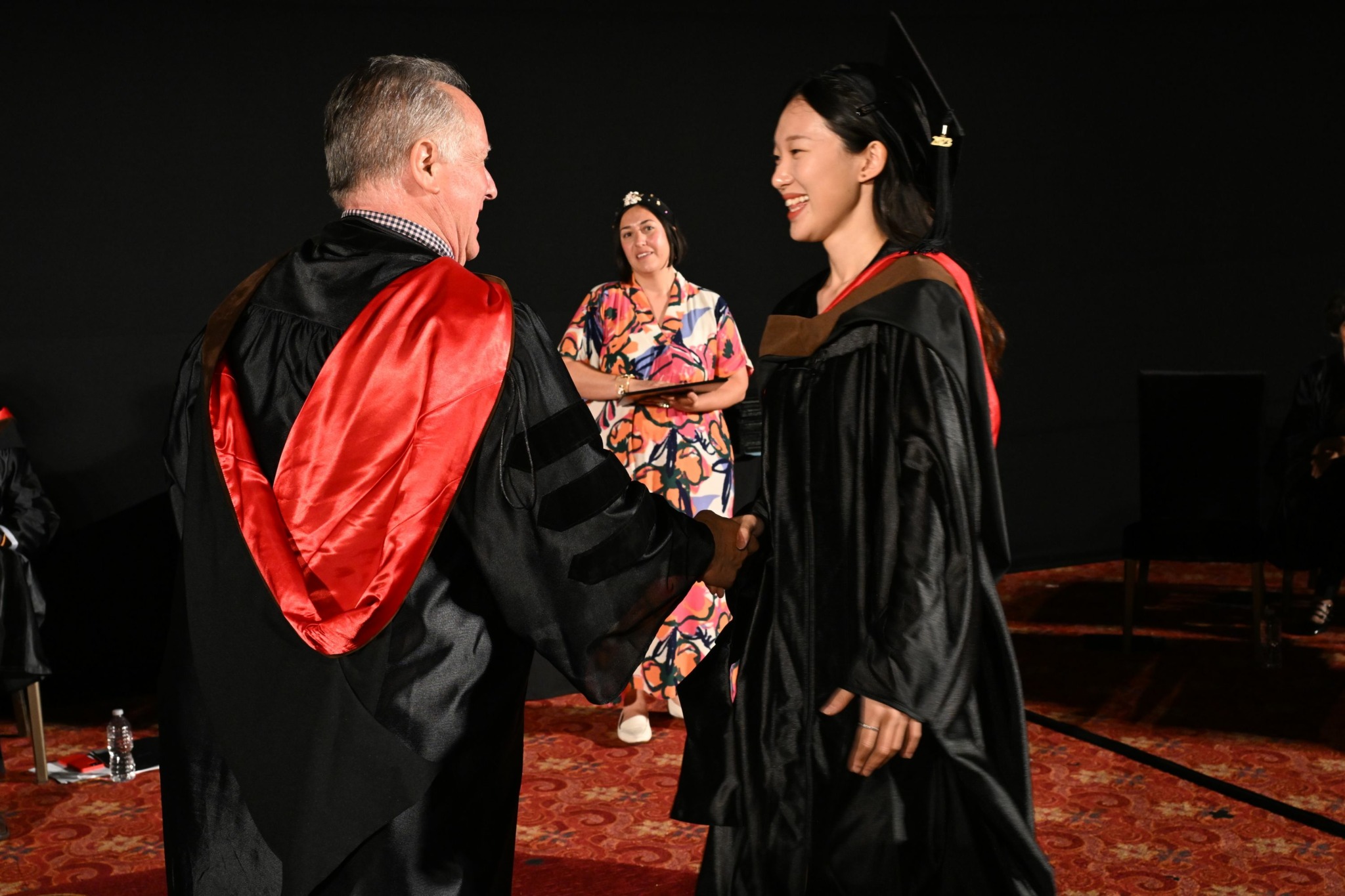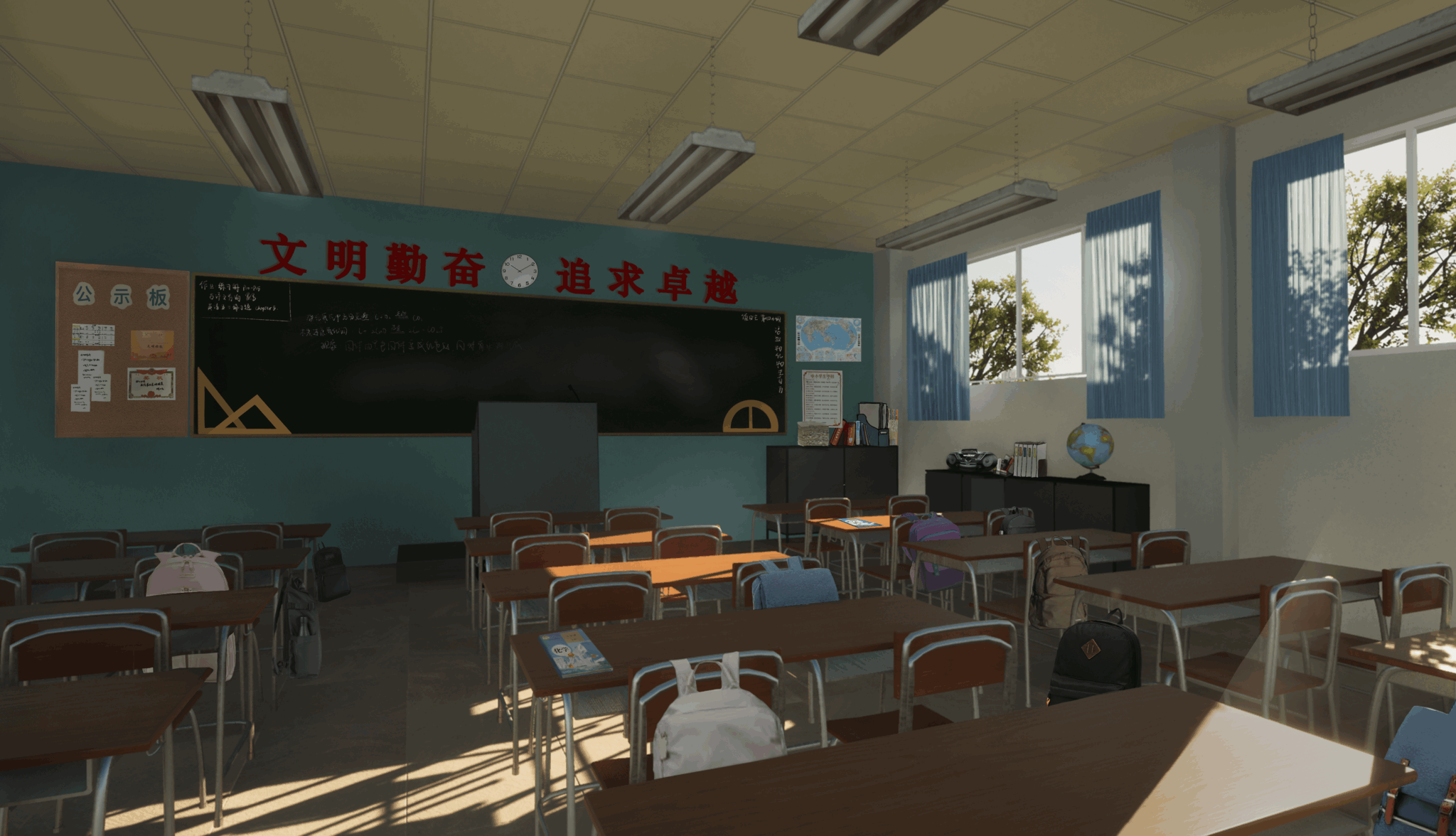We recently connected with Emily Mingyue Li and have shared our conversation below.
Hi Emily Mingyue, thanks for joining us today. Let’s kick things off with your mission – what is it and what’s the story behind why it’s your mission?
In my role as a Production Designer, my work is meaningful as it involves translating a director’s vision into physical spaces that not only serve the story but also resonate on an emotional level. Each project I take on becomes an opportunity to explore character psychology through design. For example, when I worked on “LIKES,” a short film about a teenage Chinese girl named Chunxiao, my goal was to create a world that visually echoed her internal journey. Building a Chinese middle school set in Los Angeles, I focused on making it feel both familiar and slightly constricting, much like the pressures Chunxiao feels as she navigates adolescence. Her bedroom was a particularly personal design challenge. I created a 2010s-style Chinese bedroom with tight, boxy built-in cabinets that gave a sense of confinement, symbolizing the societal and familial pressures she faces. Every design choice, from the color palette to the placement of furniture, was meant to reflect her emotional state. The fantasy sequences allowed me to step into her dream world—full of bright colors and exaggerated visuals—only to shatter it when she faces reality. The installation of stocking hanging above her as she realizes she’s been scammed was not just a visual metaphor but an emotional one, symbolizing the weight of her disillusionment. Designing that moment felt deeply personal because it was about using the set to help convey a turning point in her life, taking the audience with her on that emotional journey. My job, ultimately, is to make sure that every visual element serves both the narrative and the character’s emotional arc, bringing their story to life in a way that feels real, relatable, and resonant.

Emily Mingyue, before we move on to more of these sorts of questions, can you take some time to bring our readers up to speed on you and what you do?
I’m Emily Mingyue Li, a Los Angeles-based Production Designer and Producer with a passion for creating visually immersive worlds that support and enhance storytelling. I hold an MFA in Production Design from the American Film Institute, and over the years, I’ve worked on a wide range of projects, including feature film, short films, commercials, TV series, and theater productions. My work has been recognized at some of the most prestigious film festivals, including Cannes, Toronto, and Palm Springs, and I’ve been honored with awards such as the ASC Owen Roizman Student Heritage Award, The Telly Award, and the Silver Award for Best Production Design at the Independent Shorts Awards for “Bliss and Sad”.
What sets me apart is my dedication to combining creativity with authenticity, ensuring that each design not only looks visually stunning but also serves the emotional core of the story. Whether it’s crafting intricate, detailed sets for a period piece or designing sleek, modern environments for commercials, I focus on bringing the director’s vision to life while adding my own artistic flair. I also take pride in my ability to manage the production design process from concept to completion, balancing creative challenges with budget and time constraints.
Through the ADG Production Design Initiative Program, I’m continually growing as a designer, and I want potential collaborators to know that I’m committed to producing work that resonates with audiences while elevating the visual narrative of every project I take on.

What’s the most rewarding aspect of being a creative in your experience?
I’ve always been drawn to storytelling because I believe that there’s so much happening in the world that we don’t fully see or understand. Every minute, stories are unfolding, and it often feels like there are parallel worlds happening at the same time. I want to capture those stories—whether they’re touching, inspiring, ridiculous, or sad—because I believe even the most unbelievable events are rooted in some kind of truth. There’s a quote, “Art is from but beyond life,” but I feel that life itself is actually beyond art. We take what we see, hear, believe, experience, and feel, and we mix it all together to create art. In that sense, art is just a way of processing and presenting the incredible complexity of life.
When I studied Film and TV production at Boston University, I discovered production design, and everything clicked for me. I realized that creating the world for the characters in a story is one of the most exciting parts of filmmaking. The environment shapes who the characters are, and the space they inhabit tells a story that words can’t fully capture. The textures, the colors, the layout of the space—these details reveal so much about the characters’ inner lives and the world they live in. Production design allows me to bring those untold stories to life through the details, creating a world that feels real and meaningful for both the characters and the audience.

What do you think is the goal or mission that drives your creative journey?
The driving force behind my creative journey has always been my curiosity about the future. Even as a child, I found myself imagining what the world would look like 100 or 200 years from now. Growing up watching countless sci-fi films, I became captivated by how filmmakers visualized future worlds and how those visions could shape our understanding of what’s possible. Films like “Minority Report” or “The Matrix” had a profound influence—seeing how technology and society were imagined for the future pushed me to think about how our collective imagination might influence the reality we eventually create.
Beyond my fascination with the future, I often consider how film design itself can shape the world we live in. As a production designer, I see my role as more than just creating visual settings—I believe the worlds we design today can inspire people to envision and construct tomorrow. For example, the personalized ads and gesture-based tech seen in “Minority Report” have parallels in today’s tech world, from targeted marketing to touchless interfaces. In this way, production design can be a source of inspiration for real-world innovation, from architecture to technology. The boundary between what we imagine on screen and what becomes reality is often thinner than we think.
At the same time, my passion for studying history plays a crucial role in my work. I believe in the concept of everything having cause and effect. By understanding how people lived in the past—their environments, tools, and struggles—we gain a deeper understanding of the trajectory leading into the future. I’m constantly exploring how the decisions we make today, along with the cultural histories we carry, will shape the world for future generations.
In my work, I aim to blend this historical understanding with forward-thinking imagination. I strive to create spaces that not only tell the story of where we’ve been but also hint at where we might be going. Whether designing a futuristic world in a sci-fi film or recreating a past era for a period piece, my goal is to explore the deeply intertwined relationship between history and the future through the worlds we build.
Contact Info:
- Website: https://emilymingyueli.site
- Instagram: mingyue_leee


Image Credits
Photographer: Tim Toda


